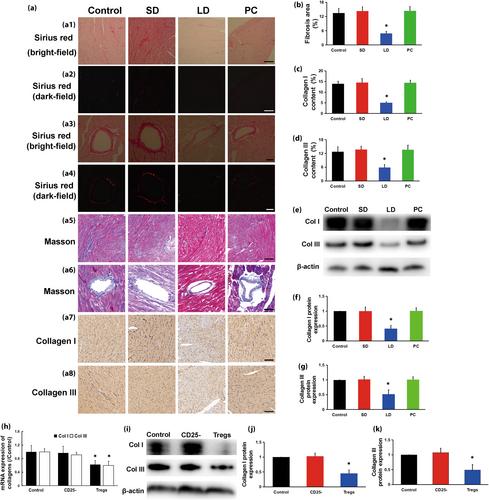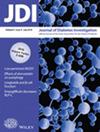Regulatory T cells protect against diabetic cardiomyopathy in db/db mice
Abstract
Aims/Introduction
Regulatory T cells (Tregs) have protected against many cardiovascular diseases. This study was intended to explore the effect of Tregs on diabetic cardiomyopathy (DCM) using a db/db mouse model.
Materials and methods
Eight-week-old male db/db mice were randomly divided into four groups: the control group, administered 200 μL phosphate-buffered saline; the small-dose Treg group, administered 105 Tregs; the large-dose Treg group, administered 106 Tregs; and the PC group, administered 100 μg anti-CD25 specific antibody (PC61) and 106 Tregs. After 12 weeks, mice were euthanized. Transthoracic echocardiography was carried out at the beginning and end of the experiment. Relevant basic experiments to evaluate the effects of Tregs on DCM were carried out.
Results
Echocardiography showed that the impaired diastolic and systolic functions were significantly improved in mice administered large-dose Tregs. Large-dose Tregs significantly ameliorated myocardial hypertrophy and fibrosis, and decreased hypertrophic gene expression and collagen deposition. The protective effects of Tregs on diabetic hearts were associated with decreased oxidative stress, inflammatory response and apoptosis. In addition, Tregs promoted the activation of the phosphatidylinositol 3-kinase–protein kinase B signaling pathway, whereas they inhibited extracellular signal-regulated kinase 1/2 and Jun N-terminal kinase phosphorylation, which might be responsible for the cardioprotective role of Tregs against DCM.
Conclusions
Tregs ameliorated myocardial hypertrophy and fibrosis, improved cardiac dysfunction, and protected against DCM progression in db/db mice. The mechanisms involved a decrease of inflammatory response, oxidative stress and apoptosis, which might be mediated by phosphatidylinositol 3-kinase–protein kinase B and mitogen-activated protein kinase pathways. Hence, Tregs might serve as a promising therapeutic approach for DCM treatment.


 求助内容:
求助内容: 应助结果提醒方式:
应助结果提醒方式:


